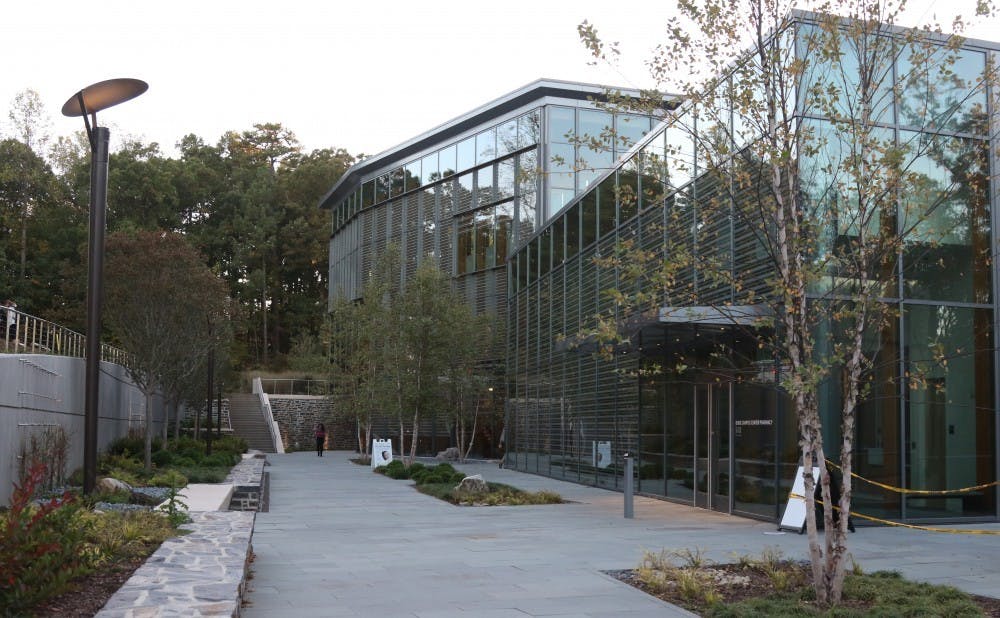In Nov. 2015, a series of racially-fueled and homophobic incidents caused tensions to fly high on campus.
In an open forum, then-President Richard Brodhead fielded questions from a riled-up student body. One student questioned the lack of diversity in Duke’s Counseling and Psychological Services staff.
Then-junior Christine Wei noted that there was only one Asian-American counselor on the staff for a school that featured a first-year class with 28 percent Asian, Asian-American or Pacific Islander representation.
Two years later, CAPS has responded to those complaints, announcing in a Dec. 14 Duke Today release that six of its last eight hires—on a staff of 32—have been people of color. Four of the staff members are Asian-American counselors. Danielle Oakley, director of CAPS and staff psychologist, said that CAPS serves students of color in the proportion that they are represented on campus.
Some of the new staffers also identify as LGBTQ+, international and multilingual, according to the release.
“The students will know that we’ve listened to them and we’ve taken their feedback very seriously,” Oakley said. “We also hope that it represents to the students that we have a commitment to working with those who have experienced marginalization, discrimination and oppression and that we understand the impact of those on their mental health.”
Junior Tatyana Bidopia, president of Duke’s chapter of the National Alliance on Mental Illness, has been vocal about the need for CAPS to increase the diversity of its staff. She says the increase in diversity is good enough for now, but that CAPS still has to base its staff on the specific student populations that need treatment, not just the overall demographics of the school.
“It depends on the student population seeking treatment and care,” Bidopia said. “Basing it on that might be a better direction to push for in the future. We need to work on matching students needs in terms of who is seeking care at CAPS, and not basing it just on the student population. There are differences in the student population in who is seeking care.”
The release said that usage of CAPS has nearly tripled this past semester, going from seeing 14 percent of the student body to 35 percent this fall. Oakley attributed part of that CAPS being housed in the Student Wellness Center, the typical annual growth it sees and that the nation as a whole has sought out psychological services more since the election of President Donald Trump.
Oakley noted that students come in the most for anxiety, followed by depression and then relationship issues, but that more and more students are growing comfortable sharing their experiences of marginalization.
“Since we have been focusing on the impacts of marginalization and discrimination on mental health, we have more students of color and marginalized groups coming in and talking about that experience with us,” she said.
Oakley added that CAPS does its best to incorporate students’ desires into the treatment process. Being of a certain identity doesn’t necessarily mean that a student will be assigned to a counselor of that identity, Oakley said, but CAPS asks students if they want a certain identity to be taken into account.
She noted that CAPS does this twice—once when students fill out the initial intake form at their preliminary consultation, and then when a counselor talks to a student one-on-one.
The format of the first consultation has changed this year. In the past, students would first call to schedule an appointment. Now, they are required to walk in and fill out a form—then to schedule an appointment in the future after briefly speaking with a psychologist.
Bidopia said that process usually takes two weeks—too long, in her opinion. She noted that the wait is a sign that CAPS needs more resources and funding.
Oakley explained that CAPS will add staff as they are able to.
Bidopia also said that the new format of walking into the office to set up their first appointment might discourage some from coming to CAPS.
“As far as I know, I think it’s a lot harder for students to walk in. It makes students more uncomfortable,” Bidopia said. “They don’t want to walk in as their first interaction with mental health at Duke. A phone call might have been more helpful because students might have trouble actually going in. An online scheduler at first or something less personal would be a good step at first to make the appointment without having that intimidating feeling of walking in.”
Bidopia added that she hopes CAPS will be able to incorporate more alternative healing practices, including spiritual healing, into its work. Oakley and NAMI have been working on formulating a survey to better incorporate students’ wishes into the process, she said.
“Right now, we’re working on surveys for students, what students might want to see at CAPS, having different focus groups so different students from different backgrounds can share their different perspectives,” Bidopia said. “Just speculating isn’t going to be the right direction.”
Get The Chronicle straight to your inbox
Signup for our weekly newsletter. Cancel at any time.

Managing Editor 2018-19, 2019-2020 Features & Investigations Editor
A member of the class of 2020 hailing from San Mateo, Calif., Ben is The Chronicle's Towerview Editor and Investigations Editor. Outside of the Chronicle, he is a public policy major working towards a journalism certificate, has interned at the Tampa Bay Times and NBC News and frequents Pitchforks.

